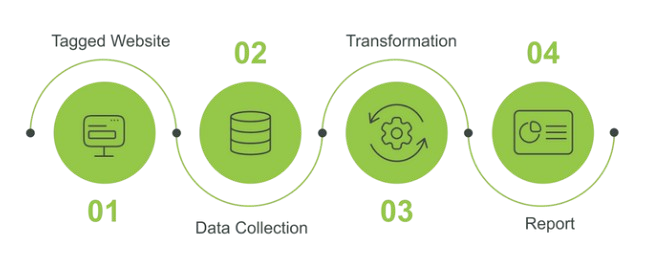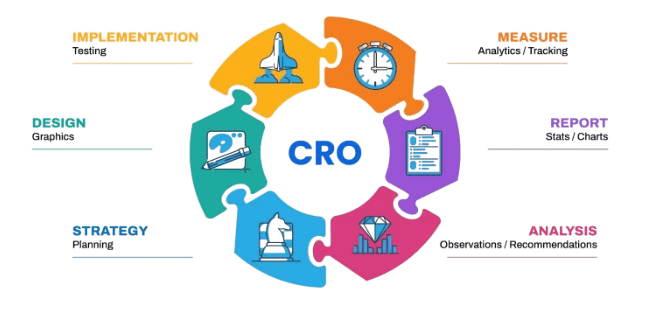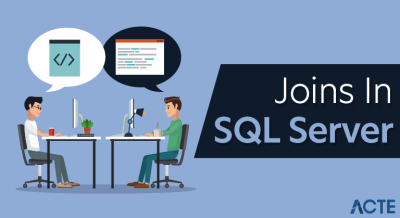
- Introduction to Website Analytics
- Types of Website Analytics
- How Analytics Helps Improve User Experience
- Conversion Rate Optimization through Analytics
- Role of Google Analytics in Business Growth
- Social Media and Digital Marketing Analytics
- How AI and Machine Learning Enhance Website Analytics
- Future Trends in Website Analytics for Businesses
Introduction to Website Analytics
Website analytics refers to gathering, measuring, and analyzing website data to understand user behavior, track key performance indicators (KPIs), and optimize website performance. Website analytics provides valuable insights into how users interact with a website, which pages or sections are most visited, how long users stay, and whether they achieve specific goals (like making a purchase or filling out a form). This data is crucial for businesses looking to enhance user experience, drive conversions, and optimize their digital marketing efforts, a key focus in Data Science Training. In today’s data-driven world, website analytics has become an essential tool for businesses of all sizes. By understanding user behavior and identifying trends, organizations can make informed decisions to enhance their online presence, improve marketing strategies, and provide a better user experience. With advanced tools and platforms available, website analytics empowers businesses to stay ahead in the competitive digital landscape.
Gain Insights From Leading Data Science Experts And Advance Your Career With ACTE’s Data Science Course Training Today!
Types of Website Analytics
Traffic Analytics
- Number of visitors: The total number of users visiting the site during a given period.
- New vs. Returning Visitors: Distinguishing between first-time visitors and those who have visited before.
- Traffic Sources: Identifying where the visitors come from (e.g., search engines, direct traffic, referral links, or social media).
Engagement Analytics
- Pages per Session: The number of pages viewed in a single visit.
- Bounce Rate: The percentage of visitors who leave the site after viewing only one page.
- Average Session Duration: The average time users spend on the site during a session, similar to how PEAS in Artificial Intelligence helps define system behavior, can provide valuable insights into user engagement and interaction.
- Click-through Rate (CTR): The percentage of users who click on specific links, calls to action, or ads.
- Conversion Rate: The percentage of visitors who complete a desired action, such as purchasing, filling out a form, or signing up for a newsletter.
- Goals and Funnels: Tracking specific goals, like completing a checkout process or downloading a whitepaper, and identifying any drop-offs.
- Heatmaps: Visual representations of where users click, scroll, and hover on a page.
- User Flow: The path users take from one page to another, helping to identify the most common navigation patterns.
- Session Recordings: Replays of individual user sessions to understand how users interact with the website in real time.
- Identifying Navigation Issues: Analytics can show which pages have high bounce rates or where users drop off. This information can help identify navigation or content issues that cause users to leave the site prematurely.
- Improving Page Load Times: Slow-loading pages are a significant barrier to user experience. Analytics tools can help pinpoint which pages are loading slowly, allowing businesses to optimize their website speed for a smoother user experience, much like the way Artificial Intelligence vs Human Intelligence explores efficiency and optimization in decision-making processes.
- Optimizing Content and Design: Businesses can analyze engagement metrics to determine which content resonates with users and which site areas need redesigning. This leads to more relevant content and a better-designed interface that engages users.
- Personalizing User Experience: Analytics helps track user behavior and preferences, which can be used to create personalized experiences for different segments of users, such as tailored recommendations or targeted content.
- Mobile Optimization: With the rise of mobile browsing, analytics provides insights into how the site performs on mobile devices, helping businesses optimize their websites for mobile users.
- Traffic Insights: Google Analytics helps businesses understand where their visitors are coming from, whether through organic search, paid ads, social media, or referral links.
- Audience Segmentation: It allows businesses to segment users based on demographics, behavior, or location, helping to tailor marketing campaigns and website experiences.
- Goal Tracking: Google Analytics helps track specific goals, such as form submissions, downloads, or e-commerce transactions, providing valuable data on conversions, a concept frequently explored in Data Science Training.
- Real-Time Data: Google Analytics offers real-time insights, allowing businesses to monitor website performance and user activity.
- User Flow Analysis: Google Analytics provides a user flow feature, which visualizes how visitors navigate through a website.
- Custom Reporting: Google Analytics allows businesses to create custom reports tailored to specific needs or key performance indicators (KPIs).
- Performance Tracking: Social media and digital marketing analytics provide insights into the performance of campaigns across platforms like Facebook, Instagram, Twitter, Google Ads, and email marketing. This allows businesses to assess the effectiveness of their marketing strategies in real-time.
- Audience Insights: Analytics tools help businesses understand the demographics, interests, behaviors, and location of their target audience. This enables better targeting and more personalized marketing content, improving engagement and conversion rates.
- Engagement Metrics: Social media analytics measure user engagement, such as likes, shares, comments, and click-through rates. These metrics help businesses evaluate the success of their content and determine which types of posts resonate most with their audience.
- Traffic Analysis: Analytics platforms, like Google Analytics, allow businesses to track traffic generated from social media and other digital marketing channels, much like Mastering the INDIRECT Function in Excel helps users dynamically reference data across different sheets for more flexible analysis.
- ROI Measurement: By analyzing key metrics like cost-per-click (CPC), cost-per-conversion, and customer lifetime value (CLV), businesses can measure the return on investment (ROI) of their digital marketing efforts and optimize their budget allocation accordingly.
- Conversion Tracking: Digital marketing analytics help track specific goals, such as form submissions, purchases, or email sign-ups. By linking user actions to campaigns, businesses can evaluate the conversion performance of their digital strategies.
- Sentiment Analysis: Social media analytics tools allow businesses to perform sentiment analysis, helping them gauge public perception of their brand, products, or services. This provides valuable feedback for improving brand reputation and customer relations.
- Competitor Benchmarking: By comparing performance metrics with competitors, businesses can identify gaps in their digital marketing strategies. Competitive analysis allows them to adjust tactics and remain competitive in their market.

Conversion Analytics
Behavior Analytics
How Analytics Helps Improve User Experience
Website analytics is critical in improving user experience (UX) by providing insights into how users interact with a website and identifying pain points in the user journey. Some ways analytics help improve UX include:
Explore Data Science in Depth, Check Out Our Comprehensive Data Science Course Training To Gain Insights From Our Experts!
Conversion Rate Optimization through Analytics
Conversion Rate Optimization (CRO) focuses on increasing the percentage of website visitors who complete a desired action, such as making a purchase or filling out a lead form. Website analytics play a critical role in this process by providing insights into user behavior and identifying areas for improvement. One key aspect is identifying conversion bottlenecks in the user journey where a significant number of visitors drop off, similar to how Skewness and Kurtosis are used to identify the distribution shape and outliers in data analysis, helping to pinpoint areas that need attention. For instance, a high abandonment rate during the checkout process might signal issues with payment options or form complexity. Another important practice is testing and optimization, where A/B testing is used to compare variations of web elements like headlines, buttons, or layouts to determine which version performs better.

Additionally, analyzing interactions with calls to action (CTAs) helps optimize their placement, design, and messaging for higher engagement. Conversion funnel analysis also supports CRO by mapping the user journey and highlighting where potential customers exit, enabling businesses to streamline these steps and enhance overall conversion performance.
Role of Google Analytics in Business Growth
Google Analytics is one of the most widely used website analytics tools. It provides businesses with a wealth of information about website traffic, user behavior, and conversion performance. Some ways Google Analytics supports business growth include:
Gain Your Master’s Certification in Data Science by Enrolling in Our Data Science Masters Course.
Social Media and Digital Marketing Analytics
How AI and Machine Learning Enhance Website Analytics
AI and machine learning are revolutionizing website analytics by providing deeper insights and enhancing decision-making capabilities. One major application is predictive analytics, where AI analyzes historical data to forecast future user behavior, allowing businesses to anticipate trends and make proactive decisions. This can help businesses optimize their marketing strategies, manage inventory, and better allocate resources. Another key area is personalization, where machine learning algorithms tailor the user experience by adjusting content, product recommendations, and promotions based on individual user preferences and behaviors, similar to how Autoencoders in Deep Learning are used to reduce dimensionality and extract meaningful patterns from complex data. This leads to higher engagement and conversion rates, as users receive a more relevant and customized experience. Additionally, automated insights powered by AI streamline the analytics process by automatically generating actionable insights and suggesting improvements. This saves businesses time and reduces reliance on manual analysis, enabling faster decision-making. By leveraging AI and machine learning, businesses can gain more accurate predictions, uncover hidden patterns, and optimize their websites for improved user experience and performance, ultimately driving growth and enhancing customer satisfaction.
Preparing for Data Science Job? Have a Look at Our Blog on Data Science Interview Questions & Answer To Ace Your Interview!
Future Trends in Website Analytics for Businesses
The future of website analytics is set to be shaped by several emerging trends that will transform how businesses utilize data for decision-making. Real-time analytics will become increasingly essential as businesses seek immediate insights to drive quick actions, enabling faster responses to customer behavior and market changes. Another trend is the rise of voice and visual search, which is gaining traction with consumers. Website analytics tools will need to adapt to track and measure these new forms of user interaction, providing valuable data on how users engage with content through voice commands or image-based searches, a skill often covered in Data Science Training. Integration with other business systems will also play a significant role, as website analytics will seamlessly connect with CRM systems, marketing platforms, and other business tools. This integration will provide a unified view of customer interactions, allowing for more coordinated marketing and sales strategies. Lastly, the greater use of AI and automation will drive the next wave of innovation in website analytics, helping businesses automate data collection, streamline analysis, and enhance decision-making with minimal manual intervention. These trends will ultimately lead to more efficient, data-driven strategies and improved customer experiences.



